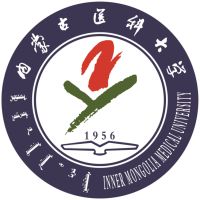Inner Mongolia Medical University was founded in 1956. It is one of the earliest higher medical schools established in ethnic minority areas in New China. The predecessor of the school was Inner Mongolia Medical College, which was then affiliated to the Ministry of Health of the People's Republic of China. In 1958, it was transferred to the management of the Inner Mongolia Autonomous Region. In 2012, it was renamed Inner Mongolia Medical University. In 2017, it became a university jointly established by the People's Government of Inner Mongolia Autonomous Region, the National Health and Family Planning Commission, and the Ministry of Education. Over the past 67 years, it has trained more than 100,000 talents of all levels and types for the country, and has made important contributions to the economic development, social progress, scientific and technological innovation, cultural inheritance, national unity, and border stability of the autonomous region. It has become a multidisciplinary medical university with regional characteristics. The school is located in Hohhot, the capital of Inner Mongolia Autonomous Region, and has Jinshan Campus (main campus), Xinhua Campus, Xilin Campus and Hongshankou Teaching Base. The total area is 1.2319 million square meters, and the total construction area is 526,900 square meters. The total value of teaching and scientific research equipment is 861 million yuan. The library has 1.2665 million paper documents, 67 Chinese and foreign databases, 332,700 electronic books, and 257,700 electronic journals. The school has 17 colleges, 12 clinical medical schools, 3 directly affiliated hospitals, and 99 practical teaching bases inside and outside the district. There are 16,603 full-time students. Among them, there are 12,496 undergraduates, 3,369 master's students, 45 doctoral students, 81 ethnic preparatory students, and 612 other types of students such as international students. Undergraduate majors are open to students from 29 provinces, municipalities, and autonomous regions in China. The school has enrolled undergraduates since 1956, graduate students since 1978, obtained the qualification for master's degree authorization in 1981, and was approved as a doctoral degree awarding institution in 2018. There is currently 1 first-level discipline authorized for doctoral degrees, 9 first-level disciplines authorized for master's degrees, 7 master's professional degree authorization categories, 49 doctoral supervisors, and 823 master's supervisors. The school has a total of 36 undergraduate majors, covering 6 disciplines of medicine, science, management, engineering, literature, and law. Among them, there are 4 national first-class undergraduate major construction sites, 3 characteristic majors of higher education institutions of the Ministry of Education, 1 major selected for the "First Batch of Undergraduate Major Comprehensive Reform Pilot Projects of Local Universities" of the Ministry of Education, and 9 autonomous region-level first-class undergraduate major construction sites. There are 5 national first-class courses, 14 autonomous region-level online open courses, and 35 autonomous region-level first-class courses. There is 1 national clinical teaching and training demonstration center, 1 national virtual simulation experimental teaching center, 1 national experimental teaching demonstration center, and 6 autonomous region-level experimental teaching demonstration centers. In 2022, the school won 4 first prizes, 4 second prizes, and 3 third prizes in the Autonomous Region Higher Education Teaching Achievement Award. The school currently has 1 high-level key discipline of traditional Chinese medicine of the State Administration of Traditional Chinese Medicine, 1 "first-class construction discipline" of the autonomous region, 5 disciplines for quality improvement and cultivation of the autonomous region, 1 advantageous and characteristic discipline of the autonomous region, 5 key disciplines of the autonomous region, and 2 key cultivation disciplines of the autonomous region. There are 8 national key clinical specialties, 1 key specialty of the State Administration of Traditional Chinese Medicine, 11 leading clinical medicine disciplines of the autonomous region, 23 key clinical medicine disciplines of the autonomous region, and clinical medicine disciplines are among the top 1% of ESI globally. There are 1 autonomous region-level collaborative innovation center, 1 autonomous region-level collaborative innovation cultivation center, 8 autonomous region key laboratories, 4 autonomous region engineering technology research centers, 5 autonomous region engineering research centers, 4 autonomous region key laboratories of universities, 4 autonomous region medical and health key laboratories, 1 social science innovation platform, and 1 autonomous region key research base for humanities and social sciences. The Inner Mongolia Autonomous Region Mongolian Medicine Museum and the Inner Mongolia Autonomous Region Health Policy Research Institute, Cardiovascular Research Institute, and Orthopedic Research Institute are all located in our school. The school currently has 1,627 faculty and staff, including 977 full-time teachers. Among them, there are 306 professors and 287 associate professors, and the proportion of full-time teachers with doctoral degrees is 44.52%. There are 68 experts who enjoy special government allowances from the State Council, 46 young and middle-aged experts with outstanding contributions from the country and the autonomous region, 1 national famous teacher of traditional Chinese medicine colleges and universities, 2 national outstanding teachers, 9 outstanding talents in the autonomous region, 66 "Grassland Talents" innovative talent teams in the autonomous region, 124 individuals, and 117 first and second level candidates for the autonomous region's "New Century 321 Talent Project". There are 15 famous teachers in the autonomous region, 11 outstanding teachers in the autonomous region, 12 new teachers in the autonomous region, 1 national teaching team and 12 autonomous region-level teaching teams, 4 autonomous region science and technology innovation teams, and 12 autonomous region college science and technology innovation teams. Since the 14th Five-Year Plan, the school has undertaken 1,189 scientific research projects at all levels and types. Among them, 46 projects are from the National Natural Science Foundation of China. The university has won 37 autonomous region science and technology awards (10 first prizes, 23 second prizes, 2 third prizes, and 2 youth science and technology innovation awards), 2 autonomous region philosophy and social science outstanding achievements government awards (1 first prize, 1 second prize), and 25 autonomous region-level and above professional association science and technology awards (2 first prizes, 7 second prizes, and 16 third prizes). 369 national patents have been authorized. Among them, there are 28 invention patents, 325 utility model patents, and 16 design patents. 44 software copyrights have been approved. The "Journal of Inner Mongolia Medical University" sponsored by the school was rated as a "Chinese University Characteristic Science and Technology Journal" by the Science and Technology Department of the Ministry of Education, and was identified as a "Chinese Science and Technology Paper Statistical Source Journal" by the Chinese Institute of Scientific and Technological Information; the "Disease Monitoring and Control" published is a series of journals of the Chinese Preventive Medicine Association. The school has always adhered to the principle of open education and attached importance to exchanges and cooperation with domestic and foreign universities. It has become a member unit of the "Belt and Road" International Medical Education Alliance and Traditional Chinese Medicine Alliance, the South Asia and Southeast Asia Medical Education and Health Care Alliance, the China-Russia Medical University Alliance, the China Education International Exchange Association, the Western Medical Education Alliance, the Northeast Three Provinces and One Region New Medical Education Alliance, the Yellow River Basin Medical Colleges Alliance, and the Western China Traditional Chinese Medicine University Alliance. The school has carried out multi-level and multi-field exchanges and cooperation with many medical schools or scientific research institutions in 10 countries, including Mongolian National Medical University, Oriental Medical College of Peoples' Friendship University of Russia, University of Alberta in Canada, Okayama University in Japan, Yonsei University in South Korea, Suan Sunata Rajabhat University in Thailand, Tongji Institute of Medical Research in Singapore, Gomel Medical University in Belarus, Bukhara Medical College in Uzbekistan, Azerbaijan State Medical University, and Mongolian Academy of Traditional Medicine Sciences; co-built the "National High-level School of Public Health" with Shanxi Medical University, established long-term cooperative relations with universities such as Peking University School of Medicine, Capital Medical University, Xi'an Jiaotong University School of Medicine, Beijing University of Chinese Medicine, and Tianjin University of Traditional Chinese Medicine, and carried out extensive teacher-student exchanges and scientific research cooperation. The school always adheres to the guidance of Xi Jinping Thought on Socialism with Chinese Characteristics for a New Era, adheres to the socialist direction of running schools, fully implements the Party's education policy, implements the fundamental task of cultivating morality and cultivating people, follows the laws of development of higher medical education, and upholds the school motto of "erudition, practice, sincerity, and perfection" and the "character of Inner Mongolia Medical University" of "hard work, solidarity, reform, self-purification and dedication". It insists on giving equal importance to modern medicine and traditional medicine, and developing Mongolian medicine as its characteristic. It is committed to building a first-class medical university with regional characteristics, cultivating new people of the era who are physically and mentally healthy, have good professional ethics, solid basic theories and basic skills, adapt to the needs of the national health and health cause and regional economic and social development, have high comprehensive qualities, can be retained and used, and are well-rounded in moral, intellectual, physical, aesthetic and labor development, and provide strong talent guarantee, intellectual support and scientific and technological support for the economic and social development and health and health progress of the country and the Inner Mongolia Autonomous Region.
-

Tsinghua University
-

Peking University
-

Fudan University
-

Wuhan University
-

Zhejiang University
-

Nanjing University
-

Sun Yat-sen University
-

Tongji University
-

Renmin University of China
-

Jahrom University of Medical Sciences
-

Mesoamerican University
-

Istmo University
-
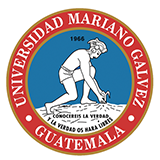
Mariano Galvez University of Guatemala
-
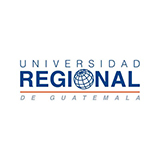
Regional University of Guatemala
-
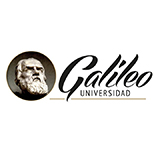
Galileo University
-
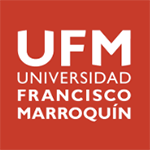
Francisco Marroquín University
-

Rafael Landívar University
-
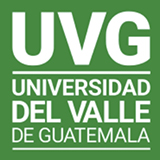
University of the Valley of Guatemala
-
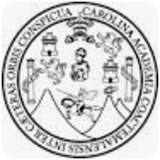
University of San Carlos of Guatemala
-

Technological Institute of Tlaxcala Plateau
-

Golfo University
-
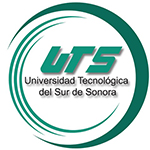
Technological University of South Sonora
-
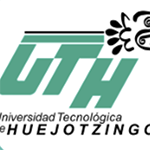
Technological University of Huejotzingo
-
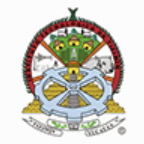
Tizimín Institute of Technology
-
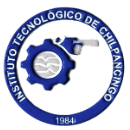
Chilpancingo Institute of Technology

